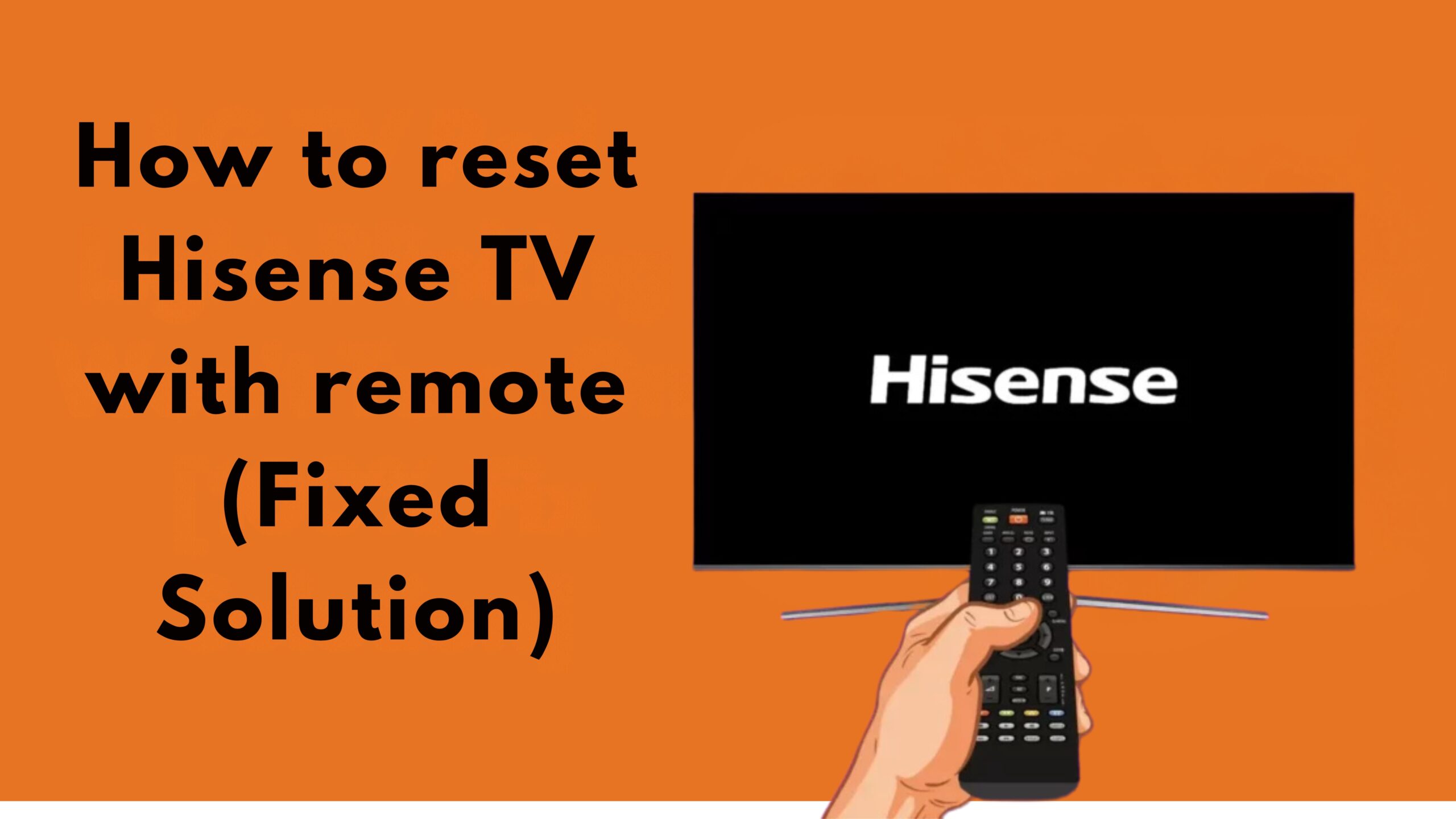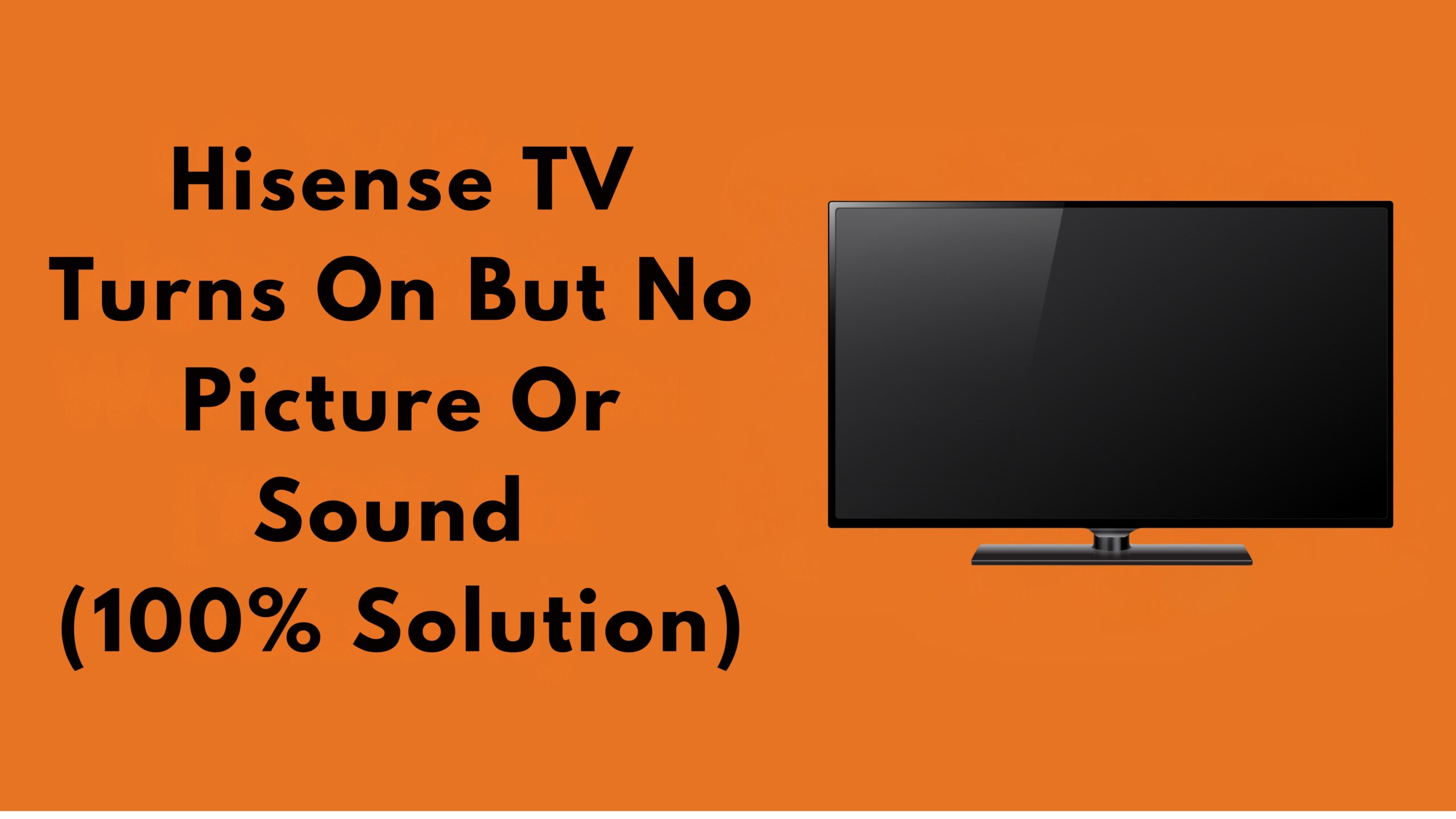You get comfortable on your couch and prepare to spend the rest of the evening watching your favorite show.
As the popcorn is in place, the couch has been set up in the perfect fighting position, it is time to turn on the TV with the remote control.
In this article, we will look at some of the factors contributing to this problem, and provide some honest information on how to resolve it.
Use our own experience on the matter as an example.
Understanding the Issue: Sound but No Picture
![Sound but no picture on TV HDMI [Fix Solutions]](https://4ucartoon.one/wp-content/uploads/2024/10/Sound-but-no-picture-on-TV-HDMI-Fix-Solutions-300x169.jpg)
Before focusing on ways to solve the issue, let’s try to analyze the reason as to why you can hear sound from the television but cannot see any picture.
The modern home entertainment system is based on A/V signals, and HDMI is the main A/V output interface of streaming boxes, game consoles, or Blu-ray players wired to the screens.
When things go wrong, several issues could have caused it:
1. Faulty HDMI Cable
When HDMI is poorly connected, frayed, or damaged it may prevent the video signal from reaching the display but allow audio.
At times, it could appear to work properly with audio but not with video.
2. Input Source Mismatch
In some cases, a user may set the wrong input source on the television, for example: the device is plugged into HDMI 1 and turned to HDMI 2.
The audio will be available while the picture will be absent.
3. Device Compatibility Issues
You rarely see devices that perform the same purpose and functions; they come in different shapes and sizes.
Which can sometimes lead to compatibility problems. This especially happens when ancient electronics are being used with newer televisions.
![Sound but no picture on TV HDMI [Fix Solutions]](https://4ucartoon.one/wp-content/uploads/2024/10/Jeep-Grand-Cherokee-Key-Fob-Not-Detected-Causes-Solution-1-5-scaled-e1731061216742-134x300.jpg)
4. TV Settings Malfunction
On some occasions, the problem could be with the TV settings. Some picture settings may be disabled or not adjusted correctly, which causes a black screen picture.
5. Software Glitches
Communication failure can also be experienced due to a firmware or software issue with the TV or connected device, thus producing audio with no picture.
6. Defective HDMI Port
The broken HDMI port of the television or the connected device can also create problems.
In case the port is damaged or physically dirty with dust and particles, the connection may not work properly.
7. External Interference
There are also other reasons which include electrical interference or other appliances that are connected can also be the causes for the issue.
Troubleshooting Steps: Getting Your Picture Back
Having stated the possible reasons, let us continue by discussing some of the very elaborate and detailed troubleshooting procedures to return the lost picture.
Step 1: Check the HDMI Cable
Let us begin with the least complicated approach: check out the HDMI wire first.
Physical Inspection:
Check for any external signs that would suggest damage to the wire, such as bends or breaks.
Reconnection:
First, remove the HDMI cable from both ends, then plug it back in again from the device and the TV sides.
It should make a clicking sound when fitted properly.
Test with a Different Cable:
If possible, use another HDMI cable to see if that resolves the problem. It is easy to do and effective when performed.
Step 2: Verify the Input Source
At times, the solution to the problem could simply be switching the TV input that the user is currently on.
Input Button:
If the device having this problem has no picture and only sound, then try using the “Input” or the “Source” button of your remote in order to change the input options.
Make sure you have selected the appropriate HDMI entry for the appropriate device.
Labeling:
Other televisions wear HDMI identifiers on their bodies, if for example, your streaming device is tethered to HDMI 1, then the television must be toggled to HDMI 1.
Step 3: Check Device Compatibility
Check the new devices that you have recently added to your system.
Their integration may be why the system does not work.
Research Compatibility:
Confirm that the TV and the peripheral device are from the same manufacturer. Check for any compatibility concerns on both devices.
Firmware Updates:
Make sure on both your television set and the device attached to it, the most recent firmware is used.
Sometimes, software updates can fix issues regarding communication.
Step 4: Examine TV Settings
In certain cases, the problem is most conveniently found in the menu settings of the television set.
Picture Settings:
Go to your TV settings and find out the picture settings.
Ensure that the display is not adjusted in such a manner that the video output is cut off.
Reset Settings:
It is always a good option to restore the default picture settings in case you are unsure of some settings. Such measures help in resolving configuration errors most of the time.
Step 5: Address Software Glitches
In case any spellbound or abnormal behavior is witnessed from the television or a peripheral device, it may be suspected that a software defect is present.
Power Cycle:
Switch off the power supply to the television and the connected device for a minute and then restore the same supply after waiting for one minute.
Turn on the power supply afterward.
Factory Reset:
Factory resetting a device is the last option one may want to resort to. This action deletes every other setting along with personal data.
Step 6: Inspect HDMI Ports
In extreme circumstances, let’s say a broken HDMI port, the situation is made worse by a poorly built interface.
Physical Inspection:
Check to see if any of the pins are bent or if there is any debris lodged inside the port which could affect the contacts.
Cleaning:
Using a spray can carefully wipe the HDMI connectors to eliminate the dust or debris that has settled.
Step 7: Minimize External Interference
Finally, external interference may also be impacting your setup.
Check Other Devices:
When troubleshooting a problem, disconnect any other devices that may be connected to your TV or the HDMI device.
At times, another device may be the cause of the snooze.
Power Supply:
Make sure you plug the devices into a surge protector to reduce the effects of electrical interference.
Personal Anecdote: A Family Movie Night Disaster
The other day, my family thought it wise to have a movie night. For the kids, we brought in the projector.
Just about halfway through the opening credits, the sound was loud but the screen was dark, and panic ensued.
The other day while doing some tests, I found out that the HDMI cable was loose and needed retightening.
A swift reconnection and we were in business again, Resolution of a very tense ‘performance’ which was to the satisfaction of everyone.
It is at this point that we appreciate how a small thing, like securing a connection, can make a difference in some of our favorite pastimes.
Frequently Asked Questions (FAQs)
Why do I have sound but no picture on my TV?
This can be due to several reasons. These can be a defective HDMI cable or one of its connectors, an incorrect input source, incompatibility of devices, and faults in the settings of a TV.
How can I tell if my HDMI cable is damaged?
This can be inspected visually by looking at the edges or bare wires towards the ends of connectors that have been bent.
You can also test the connectors with a different cable to see if the cable is the issue.
My TV is set to the correct input, but I still have no picture. What should I do?
Try turning off your TV and the connected device and then turning them back on.
If that doesn’t resolve the issue, if the HDMI ports have been damaged, you might want to look for updates.
Can external devices cause interference with my TV?
Yes, other devices that are connected to the TV, or other appliances in close proximity to the TV can be a cause of interference at times.
Is it possible for my TV’s settings to prevent a picture from displaying?
Of course. When brightness and contrast settings are set too low, incorrect picture settings can lead to black screens although the sound is present.
Conclusion
It can be quite annoying to hear sound and not see an image on your TV screen via HDMI cable, nevertheless, considering.
The significant possibilities of how the issue may have occurred and attempting to troubleshoot in the order provided can often fix this issue.
Additionally, hunting for an HDMI cable and adjusting the settings on your TV are also quite feasible options when trying to find a solution.
Keep in mind the next time that you encounter such a situation, you are not the first to ever face this issue, numerous others have been through this particular ordeal, and if you remain calm, and composed.
You will be able to watch your favorite shows and movies without any hampering.
If after applying all these ways the fault still persists, then perhaps it could be time to seek help from a professional technician or look for hardware failure. Enjoy your movie!

![Sound but no picture on TV HDMI [Fix Solutions]](https://4ucartoon.one/wp-content/uploads/2024/10/Sound-but-no-picture-on-TV-HDMI-Fix-Solutions-scaled.jpg)

![Sony TV blinking red light codes [Causes & Solutions]](https://4ucartoon.one/wp-content/uploads/2024/10/Sony-TV-blinking-red-light-codes-Causes-Solutions-scaled.jpg)
